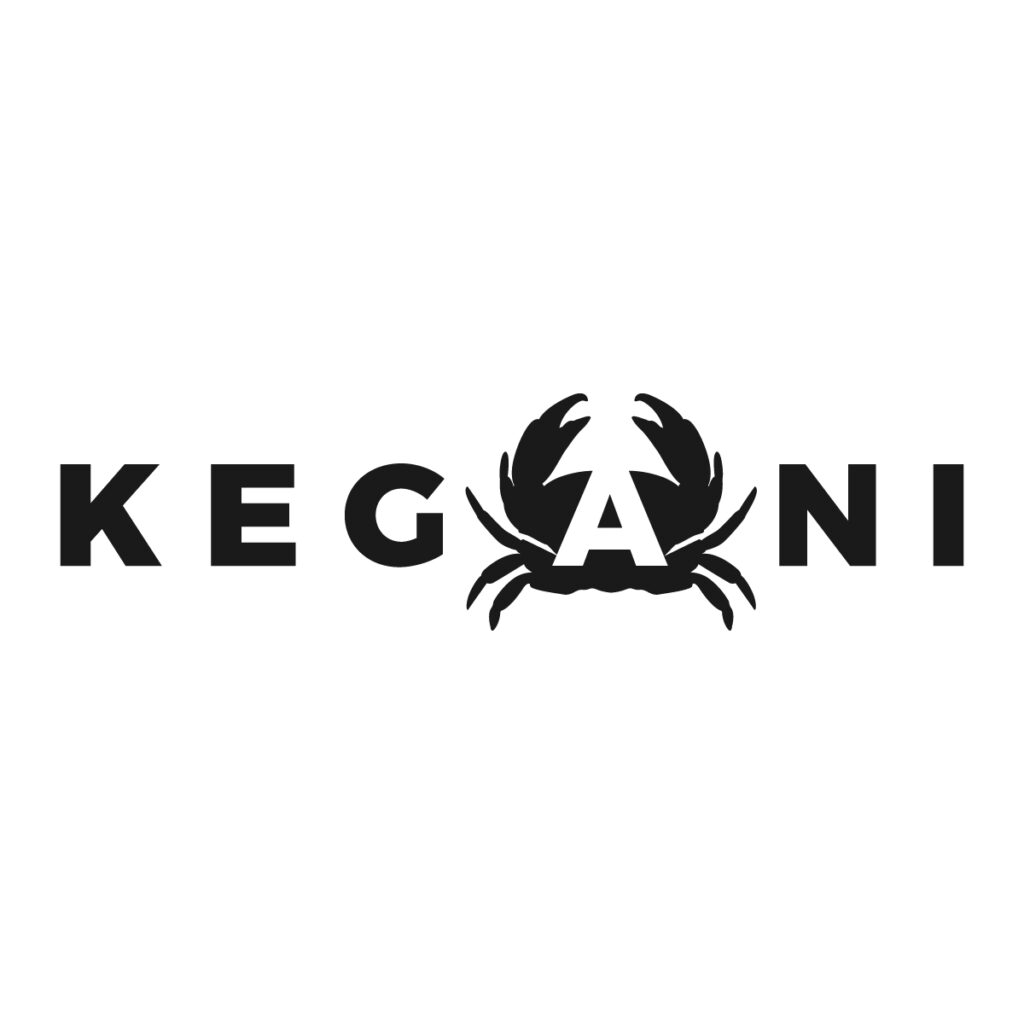Knife materials are evolving. While FRN and G10 remain popular, Lexan – the super-tough polycarbonate from aerospace – is gaining traction for handles and sheaths.
Is it the upgrade your knife catalog needs? Let’s explore its potential against the competition.
What Is Lexan?
Lexan is a type of polycarbonate plastic originally developed by GE Plastics (now owned by SABIC). It’s known for being incredibly strong, clear, and highly impact-resistant.
Unlike acrylic, which can crack or shatter under stress, Lexan bends and flexes without breaking, making it much tougher. In fact, it’s about 250 times stronger than regular glass and far more durable than acrylic.
It’s commonly used in bulletproof glass, helmet visors, and automotive components—and it’s becoming increasingly popular in knife making for those reasons.
While Lexan isn’t a common choice for mass-produced knife handle materials, it’s found a unique niche among custom makers and enthusiasts seeking something truly distinct.
Pros and Cons of Lexan Knife Components
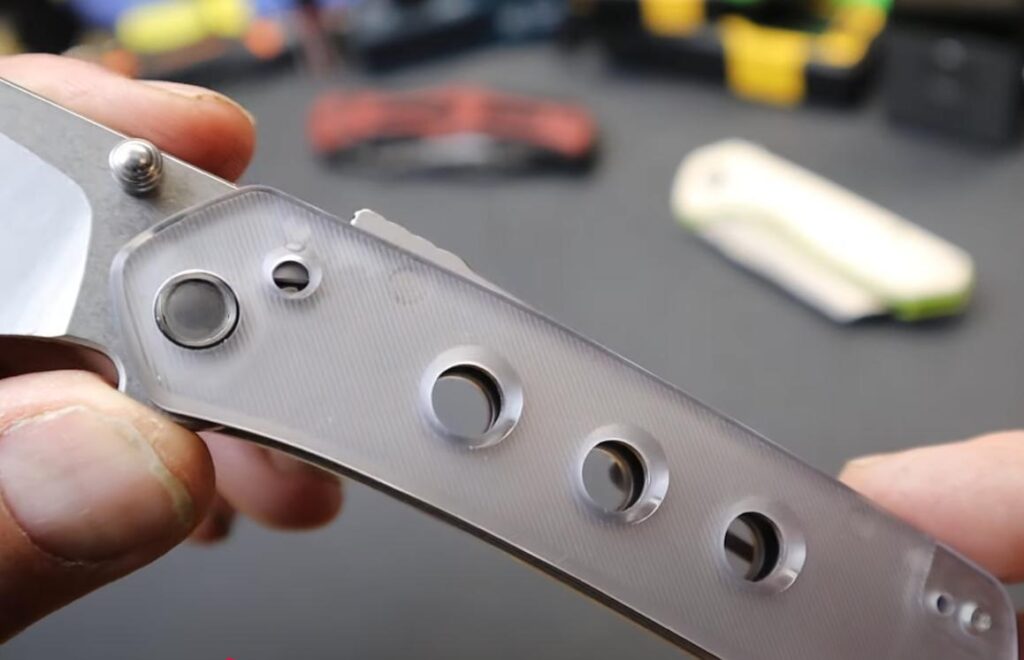
Pros
- Lightweight: Lexan weighs about 1.2 g/cm³, roughly half the weight of glass. That means your knife stays light and easy to carry all day, cutting down on hand fatigue.
- Moldable: This stuff is easy to shape and mold, letting you craft ergonomic grips and cool handle designs that fit your hand perfectly.
- Transparent: With excellent optical clarity, Lexan lets you show off inner mechanics or add eye-catching see-through effects.
- Budget-Friendly: Compared to pricier materials like carbon fiber or G10, Lexan is much more affordable—great for prototyping or making knives in larger batches.
- Customizable: You can dye it, texture it, or machine it easily during production to get exactly the look and feel you want.
- Impact-Resistant: Lexan is about 250 times tougher than glass, so it can take drops and knocks better than most plastics out there.
Cons
- Prone to Scratching: The surface hardness is relatively low (around 2H-3H), so scratches will show up unless you apply a special hard coating.
- UV Sensitivity: Without UV stabilizers or coatings, Lexan tends to yellow over time if exposed to sunlight a lot.
- Not as Premium Feeling: It won’t have the natural warmth or rugged texture of wood, G10, or carbon fiber, so it might feel a bit “plasticky” to some.
- Lower Heat Resistance: Lexan handles continuous heat up to about 82°C (180°F) and short bursts up to 125°C (257°F), but sustained high heat can cause warping or deformation.
- Limited Tactical Use: Because of its scratch and heat limits, it’s not the best choice for hardcore survival or tactical knives that see extreme conditions.
Start Working with a Professional Now
How does Lexan compare?
| Feature | Lexan | FRN | Grivory | G10 |
| Weight | Very light | Light | Moderate | Heavier |
| Impact Resistance | High | High | Moderate-High | High |
| Scratch Resistance | Low | Moderate | High | High |
| Heat Tolerance | Moderate | Moderate | High | High |
| Cost | Low | Low | Moderate | High |
| Moldability | Excellent | Excellent | Good | Fair |
| Premium Feel | Low | Moderate | Moderate | High |
Lexan vs. FRN
FRN (Fiberglass Reinforced Nylon) is generally more scratch-resistant and better for grip due to its common texturing.
Lexan is more prone to scratching and has a smoother feel, but its transparency and ability to be tinted allow for unique visual designs that FRN can’t achieve.
Lexan vs. Grivory
Grivory offers superior rigidity and heat resistance, making it ideal for hard-use knives.
Lexan is lighter and more flexible, which is great for impact absorption and preventing shattering.
Lexan vs. G10
G10 is the go-to for a premium feel, exceptional durability, and aesthetic refinement. L
Lexan is a great alternative when you want lighter weight and lower cost, especially for designs that prioritize transparency, unique visual effects, or flexibility over G10’s rugged, long-term durability.
Why some knife makers use Lexan
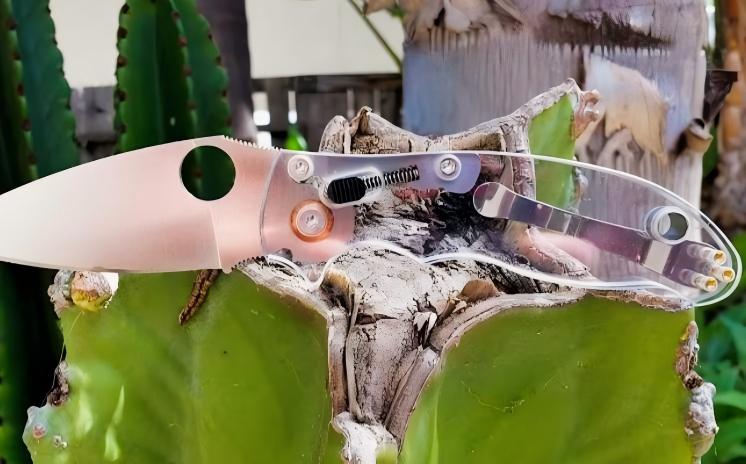
Its lightweight and transparent nature make Lexan ideal for concept knives, prototypes, and showcase pieces. Designers often use it to highlight a knife’s internal mechanics or to experiment with new ergonomic grips, thanks to its moldable structure.
It’s also affordable, a big plus when testing new designs or producing budget-friendly EDC models.
Lexan can be dyed or textured for added visual appeal, and it’s easy to machine compared to denser materials like G10 or micarta. Some knife makers even use it in sheaths or liners where flexibility and weight reduction are key.
Start Working with a Professional Now
How to work with Lexan in knife design
1. Molding and shaping
Lexan is a thermoplastic, meaning it can be heated and injection molded into detailed forms without losing its structural integrity. For knife manufacturers, this means you can create ergonomic shapes, textured grips, or even translucent handles with minimal tooling complexity.
It’s also suitable for machining if you’re working with polycarbonate sheets. However, unlike G10 or metals, Lexan requires more careful cutting and finishing to avoid edge chipping or micro-scratches.
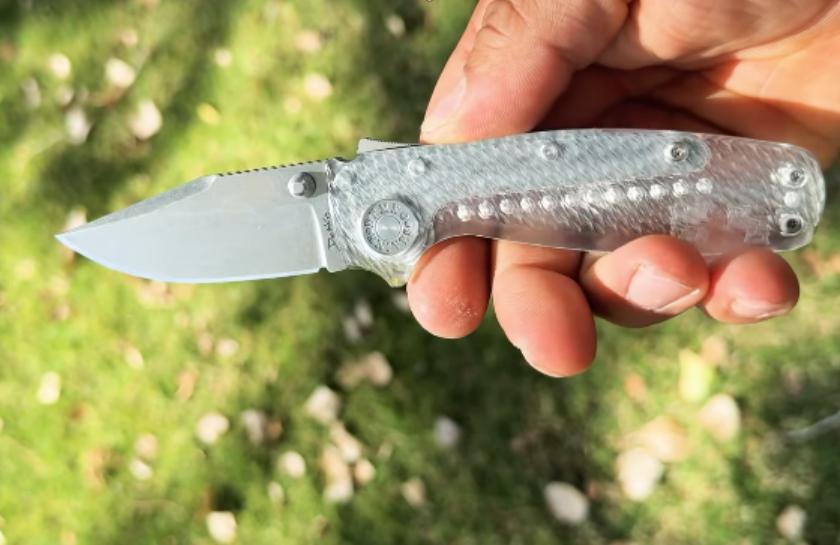
2. Finishing and surface treatment
While Lexan is easy to mold, it’s more prone to surface scuffing. For this reason, many knife makers apply special coatings or textures to reduce scratch visibility.
Anti-UV coatings can also help prevent yellowing over time, a key concern if you’re using Lexan in clear or colored transparent designs.
Polishing is possible but should be done sparingly, as too much buffing can create heat spots or warping.
3. Bonus: Combining Lexan with other materials
Lexan works well when layered or paired with liners made from stainless steel, aluminum, or even rubberized grips. This allows knife makers to maintain the lightweight benefits of Lexan while reinforcing durability or adding grip traction.
For sheaths or modular components, Lexan can also be thermoformed to snap-fit into specific blade shapes, offering a clear view of the blade while remaining impact-resistant.
Is Lexan right for your knife catalog?
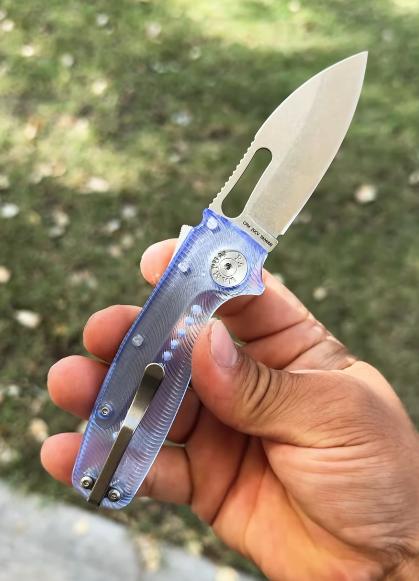
Great fit for:
- Transparent or showcase knives
- Lightweight EDCs
- Budget-friendly models
- Prototyping new handle designs
Not recommended for:
- Tactical or high-friction use
- Long-term outdoor use without UV protection
- Premium or luxury collections
With proper positioning, Lexan can be a valuable addition for retailers targeting niche buyers or developing new concepts. Its cost-effective and customizable nature makes it appealing for fast-moving product lines.
Final thoughts and next steps
Lexan brings a distinct mix of affordability, clarity, and resilience to the table. While it’s not a premium handle material, it shines in budget-friendly, creative, or display-oriented applications.
Whether you’re prototyping a new model or diversifying your offerings, Lexan deserves a closer look.
Thinking about custom Knife components? Get in touch with Kegani to explore OEM production options, request material samples, or discuss how different handle materials could elevate your next knife project.
